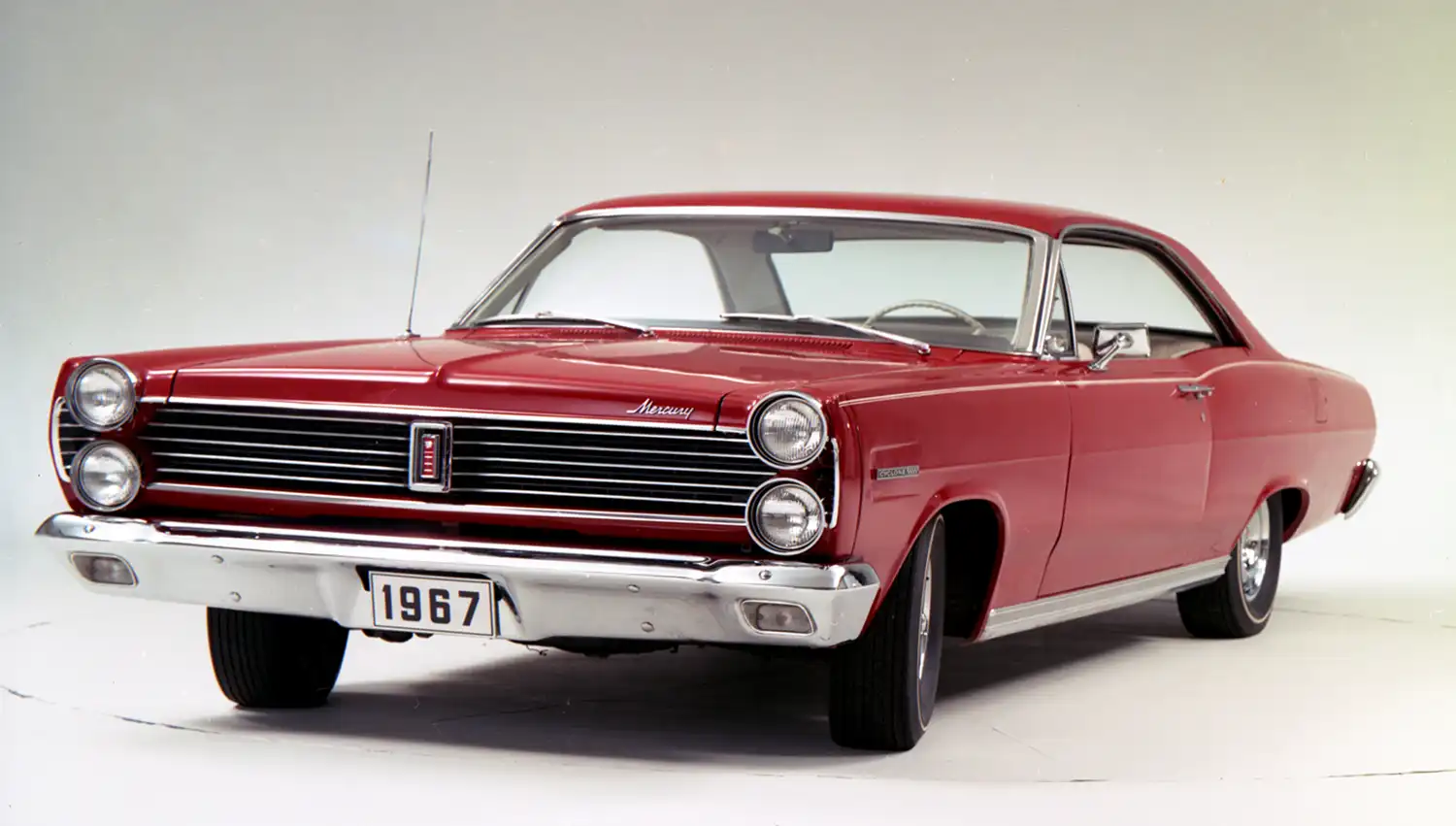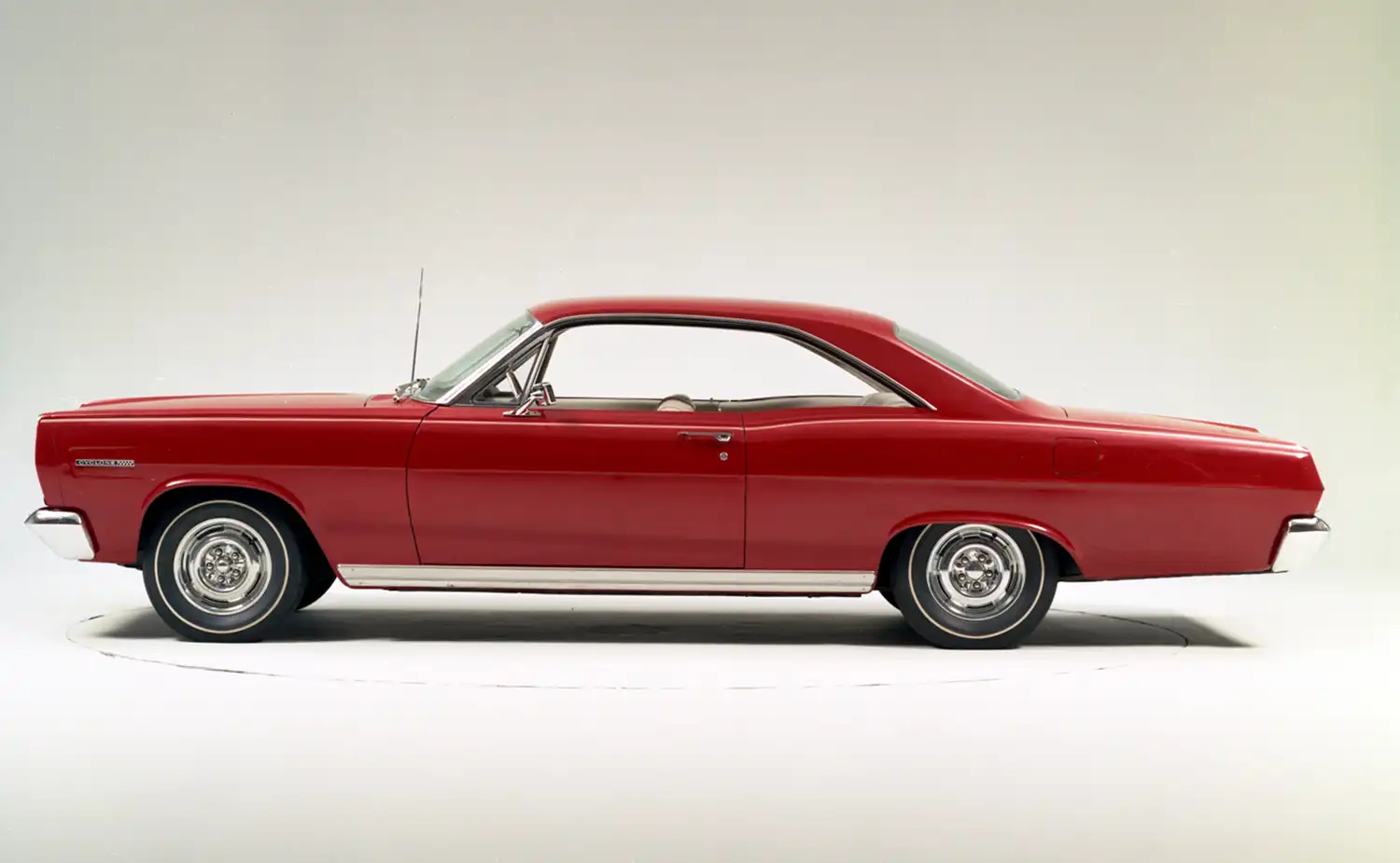
The Mercury Cyclone, a nameplate that resonated with performance enthusiasts, emerged in the mid-1960s as Mercury’s foray into the burgeoning muscle car market. Initially introduced as a performance-oriented version of the Comet, the Cyclone soon established its own identity, becoming a distinct model known for its sporty styling and potent engine options. The 1967 Mercury Cyclone Two-Door Hardtop represents a pivotal year in its history, showcasing a significant redesign that further solidified its muscle car credentials and appeal to a younger, performance-minded audience. This generation of the Cyclone emphasized sleek lines, powerful V8 engines, and a range of performance-enhancing features, making it a compelling alternative to its Ford cousin, the Fairlane/Torino, and competitors from Chevrolet, Pontiac, and Dodge.
Power and Performance: The 1967 Mercury Cyclone offered a variety of engine choices designed to deliver exhilarating performance. The standard engine was typically a V8, with displacement and horsepower varying depending on the specific trim and options selected. However, the true muscle car spirit of the Cyclone was embodied by its larger displacement V8 engines. These included potent options like the 390 cubic inch V8, which could produce significant horsepower and torque, enabling impressive acceleration and top speeds. For the most demanding performance enthusiasts, even larger and more powerful engines were available, such as the 427 cubic inch V8, turning the Cyclone into a formidable competitor on both the street and the drag strip. These high-performance engines were often paired with either a manual transmission, typically a 4-speed for the most engaging driving experience, or a robust automatic transmission capable of handling the engine’s power. Performance-oriented features such as heavy-duty suspension components, performance exhaust systems, and high-ratio rear axles were also available to further enhance the Cyclone’s capabilities.
Design and Styling: The 1967 Mercury Cyclone Two-Door Hardtop featured a distinctive design that set it apart from its predecessors and competitors. The redesign for this year brought about a more streamlined and aggressive appearance, characterized by a long hood, short deck proportions, and a fastback roofline on some models. The front fascia typically incorporated a prominent grille with the Mercury emblem, flanked by headlights that were often horizontally arranged. The body sides were generally clean, with subtle character lines that emphasized the car’s length and sleekness. The rear of the Cyclone featured taillights that were integrated into the design, often spanning a significant portion of the rear panel. The two-door hardtop body style offered a sporty and stylish profile, appealing to those who desired a muscle car with a touch of sophistication. Interior styling typically included bucket seats, a center console in some models, and a driver-focused instrument panel. Various trim levels offered different levels of luxury and sporty appointments, allowing buyers to tailor the Cyclone to their preferences.
Generational Overview and History: The Mercury Cyclone’s journey began in 1964 as a performance trim level of the Mercury Comet. These early Cyclones were intended to capitalize on the growing interest in sporty compact cars. By 1966, the Cyclone evolved into a distinct model line, positioned as a mid-size performance car. The 1967 model year marked a significant redesign, moving the Cyclone further away from its Comet roots and establishing it as a more serious contender in the muscle car segment. Subsequent generations of the Cyclone, spanning the late 1960s and early 1970s, continued to build upon this foundation, offering even more powerful engine options and increasingly aggressive styling. Notable models within the Cyclone lineage include the Cyclone GT and the high-performance Cyclone Cobra, which were direct competitors to some of the most iconic muscle cars of the era. However, changing market trends and increasing emissions regulations eventually led to the discontinuation of the Cyclone nameplate in the mid-1970s. Despite its relatively short lifespan, the Mercury Cyclone left a lasting impression as a stylish and potent mid-size muscle car that offered a unique blend of Mercury’s upscale image and raw American performance.
Legacy and Significance: The 1967 Mercury Cyclone Two-Door Hardtop holds a significant place in automotive history as a representative of the late 1960s muscle car era. It embodied the spirit of performance and style that defined this iconic period in American automotive design. While often overshadowed by its more famous rivals, the Cyclone offered a compelling package of powerful engines, sporty styling, and a touch of Mercury’s refined image. Its success in motorsports, particularly in NASCAR, further cemented its performance credentials. Today, the 1967 Mercury Cyclone is a sought-after classic among collectors and enthusiasts who appreciate its unique blend of muscle car aggression and Mercury’s distinctive flair. Its relative rarity compared to some of its competitors only adds to its desirability, making it a notable and cherished icon of American automotive history.
Summary:
- The Mercury Cyclone began as a performance version of the Comet before becoming a distinct model.
- The 1967 redesign solidified its identity as a mid-size muscle car.
- It offered various V8 engines, including high-performance options like the 390 and 427.
- The 1967 Two-Door Hardtop featured a sleek and aggressive design with a sporty profile.
- Later generations included the high-performance Cyclone GT and Cobra.
- The Cyclone competed in motorsports, including NASCAR.
- It remains a sought-after classic muscle car appreciated for its unique style and performance.
Disclaimer: Information provided is for general knowledge. Specifications and availability may have varied. Consult original sources for precise details on the 1967 Mercury Cyclone.
Source: Ford Heritage Vault
AI Assistance: Gemini
